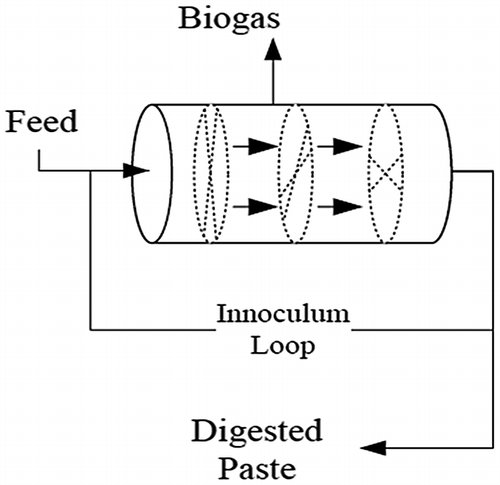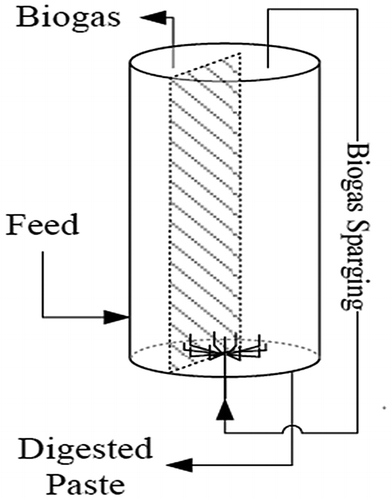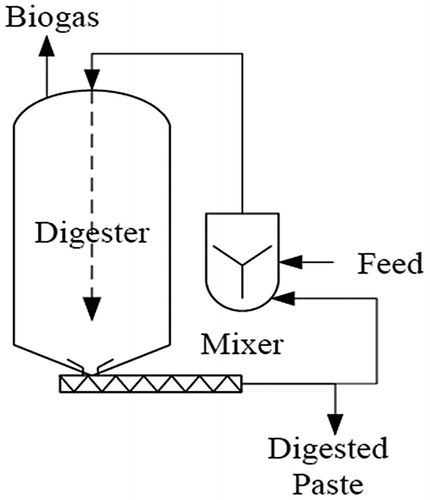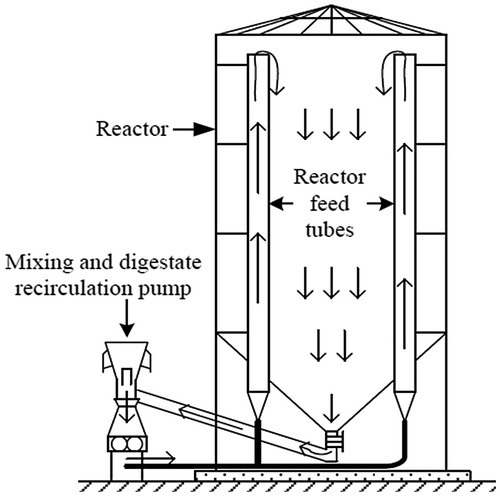Abstract
Using anaerobic digestion technology for the production of biogas micro and macro scales is considered as a promising approach, especially in development projects, management, and organization of organic waste generated in urban and rural areas. Conditions such as climate, culture, economy, and technology create different models of energy production systems from waste. Different devices in the world are built and operated. Choose the most suitable method for production of energy with the highest quantity and quality is the main concern of researchers and users. Analytical Hierarchy Process is a technique that is useful for decision-making on the basis of criteria considered in choosing the best system and using the views and experiences of experts in this field. In this study, three anaerobic digestion system to generate energy from biomass were compared couple based on the possibility of localized within the country, dependence on other energy sources, sensitive to the quality of input sources, allowing installation in various capacities, worldwide feedback, ease of set-up and installation and the complexity of the system. Dranco digestion system with relative value 0.471 and inconsistency rate 0.08 is an anaerobic digestion system that preferred experts to produce energy from biomasses in Iran.
1. Introduction
Energy has always played an important role in human, economic, and social development. Increasing energy demand in urban and rural areas will increase stress on energy sources, so the renewable energy from biomass is being eyed to provide insufficient energy supply (Sarmiento & Varela, Citation2015). With the growing dependence of communities on energy, the need for reliable and up-to-date data is essential to monitor the state of energy. Today, both developed and developing countries have a common issue, and it replaces renewable sources with non-renewable resources (Amiri, Abduli, & Ramezanianpour, Citation2010). Excessive amounts of organic waste and its dispersal in the environment create ugly landscapes and pollute water, soil, and air. In many parts of Iran, these organic material are disposed and buryed at high costs (Anonymous, Citation2013). Local sources of renewable energy farm based can help reduce energy costs for farmers and cause rural development (Houser et al., Citation2014). The choice of a suitable biological method for the removal of organic matter depends on several factors, including the type and concentration of input materials, the percentage of removal, environmental factors, economic factors, and equipment. Low efficiency of using traditional methods and their environmental pollution causes the use of modern methods of energy production from these wastes to be considered. The aim of modern biomass energy systems is to achieve maximum yields with minimum input, selection and utilization of adequate plant materials and process, optimum utilization of facilities and creation of a strong infrastructure (Omer, Citation2012). Use of biogas technology in micro and macro scales, as particularly promising approach is taken into consideration in development planning, management, and organization of organic waste generated in urban and rural areas. According to the significant amounts of biomass production annually in Iran that shown in Table , the importance of using these resources to biogas production is determinate.
Table 1. Biomass production potential in Iran.
Anaerobic digester classified according to different perspectives, such as feed, retation time, digestion temperature, the process of digestion, and the existence or absence of mixing. Increase the efficiency of gas production in anaerobic digester is the issues that are crucial for researchers and users. The design of these reactors has always been aimed at increasing the efficiency of the digestion process, the quantity and quality of gas produced have been improved and the liquid from reactor has minimum pollution. The results of this research to design reactors that have a variety of structures are different. Culture and the needs of the people, geography and level of government support, are factors that have influenced in the development of anaerobic digester (Anonymous, Citation2013). In recent years, due to the guaranteed purchase of electricity and being economic the construction of large biogas units, large installations implemented in Iran and regarding the use of an-aerobic digesters for solid waste and wastewater, there are experiences as follows: Tehran Municipality digester project is the country’s first environmental project to produce energy from municipal solid waste by anaerobic digestion to produce 2 MW of electricity capacity along with the production of high quality compost for use in horticulture and agriculture. In 2011, the anaerobic digester plant was established at the wastewater refiner in south of Tehran (activated sludge system) with a capacity of 4.8 and 2 MW commissioned soon also be added to it. 1.2 MW power plant is being installed in the north Isfahan. Using digester refineries in cities such as Tabriz, Shiraz and etc. done but not announced a programme to generate electricity (Anonymous, Citation2014).
2. Analytic hierarchy process (AHP)
The decision to adopt the best system of anaerobic digestion to produce energy from biomass should be done according to relevant and important criteria. The hierarchical analysis process is one of the most effective decision-making methods that was first proposed by Saaty in 1980 and based on paired comparisons. AHP as a multi-criteria decision aid helped managers for analysing and prioritizing the alternatives in a hierarchical structure and allows them examine different scenarios. In this method, the problem classified into subcategories on the basis of the criteria, and the decision tree is formed. In this process, the weight of each criteria and sub-criteria are not the same premise. Criteria on a table with two columns vertically and horizontally registered and based on the comparison table, Table , the two are compared, and their weight is determined. The final criteria weight obtained using Analytical Hierarchy Process prioritize the options based on the criteria and their weight is carried out (Qdsypur, Citation2000) (Shin, Shin, & Kim, Citation2016) (Fazlollahtabar, Eslami, & Salmani, Citation2010).
Table 2. Comparsion values for paired comparisons.
In the field of AHP method in different fields of science, several studies have been carried out in Iran and abroad, such as the study of Shin et al. (Citation2016). Comparison of Risk Assessment for a Nuclear Power Plant Construction Project, study of Zolghadri & Vahdani (Citation2015). Identify and prioritize the factors influencing project risk using AHP & VIKOR Fuzzy, study of Nojavan, Hashemifar, & Teimuri (Citation2014). Supply Chain Flexibility Measurement using AHP Combined Model and Fuzzy TOPSIS for Garment Industry, study of Sharifi, Akram, Rafiee, & Sabzehparvar (Citation2014). Prioritizing the cultivation of strategic agricultural products in Alborz province using the fuzzy Delphi method and the hierarchical analysis process, study of Quezada, Palominos, & Gonzalez (Citation2013) using the application of AHP in the Design of a Strategy Map, study of Mohammadian, Shahnoushi, Ghorbani, & Aghel (Citation2009). Choosing a Potential Crop Pattern using AHP Analysis Model, study of Tahriri, Osman, Ali, Yusuff, & Esfandiary (Citation2008) evaluating and selecting supplier in a steel manufacturing company and study of Hill, Braaten, Veitch, Lees, & Sharma (Citation2005) locating and prioritizing the optimal site for solid waste landfill.
3. Types of anaerobic digestion technologies
Nowadays, there are different technologies with different process for different anaerobic digestion process. The number of process steps, the operating temperature of the digest, and the concentration of solids in the digestion are those that provide different methods by each supplier. A number of commercial vendors have designed and distributed the types of digesters with a wide range of categories to the global market, as listed in Table .
Table 3. Different types of anaerobic digestion technology (Nichols, Citation2004).
In thermophilic process, the reaction time is reduced, so the reactor is required with lower volumes and the solid output is disinfected mostly due to the high process temperature. As a result, the selection of the thermophilic process has priority over mesophilic. On the other hand, single-step process have a simpler structure, less damage, and easier to operate. Dry process requires less water, which reduces the volume of the reactor. Therefore, the proposed system of anaerobic digestion in this study was a single-stage thermophilic type such as; Dranco, Kompogas, and Valorga.
3.1. Kompogas technology
This technology was started in Switzerland at the end of the 1980s. The reactor is a horizontal cylinder and the slurry moves in plug flow. Kompogas is a thermophilic process operating without gas recirculation. The material is inserted from one side of the cylinder and stays over the time, usually 20 to 15 days and the slowly rotating intermittent propeller in the digester pushed the organic material to the end of the tank. The digested material is finally dehydrated and a portion of the resulting liquid is returned to the reactor. Due to the mechanical requirements of the system, the size of the reactor is limited, and if larger capacity is required, some reactors need to be installed parallel (Arsova, Citation2010). The diagram of a Kompogas AD is shown in Figure .
3.2. Valorga technology
The Valorga process was established in France in 1981 and developed in other countries, such as the Netherlands. The Valorga reactor is a vertical cylinder pumped through the inlet pipes from the bottom of the reactor. In this system, an automatic separator is used to process the primary material for purification. This separator is a vertical midwall within two-thirds of the diameter of the cylinder. On both sides of the wall, there are holes for the passage of materials. The fermented material by the same wall flows in a circular flow path and covers the entire surface of the reactor. A pneumatic pump is also used to mix the contents. Retation time is usually three weeks. Biogas can also be injected from the bottom of the reactor, which creates a bubble as a device for mixing and keeping solids suspended (Anonymous, Citation2014; Rapport, Zhang, Jenkins, & Williams, Citation2008). The diagram of a Valorga AD is shown in Figure .
3.3. Dranco technology
Dranco technology was developed with the optimization of “dry” digestion parameters. This technology was originally developed in Belgium in 1983. Dranco digesters are vertical, dry, and one-step thermophilic digesters. The feeding of the reactor is carried out from the top of the digester and the digested material is removed from bottom of the digester. In these reactors, the physical agitator is not used for mixing substrate, but part of the biogas produced by the pump is transferred to the bottom of the tank and injected into the system through the cavities on the tank floor, thereby causing the mixing of the digester material. The digested material is also dehydrated, its solid part is used as a compost in agriculture, and its liquid portion is stabilized during the aerobic process and can be used as a fertilizer in agriculture (Alighardashi & Adl, Citation2001; De Baere, Citation2010; Rapport et al. Citation2008). The schematic diagram of a Dranco AD is shown in Figures and .
4. Methodology
In this study, seven of the most important criteria were determined, these criteria are: ease of installation, complexity of the system, the possibility of installation in different capacities, sensitivity to the quality of input resources, dependence on other sources of energy, the possibility to localize in the country and background and feedback around the world. Then the 15 experts in the field of new energy were selected and completed the questionnaires by these experts. Prioritization of the criteria and three power generation systems was done using data from questionnaires through AHP and Expert Choice software. The hierarchical analysis process has used a geometric mean for this purpose. The Hierarchical structure of the model is shown in Figure .
Using the data from questionnaires completed by the experts, according to Equation (Equation1(1) ), the group of numbers was formed and their average was calculated from Equation (Equation2
(2) ); then for each expert, the difference with the average of the group according to Equation (Equation3
(3) ) Calculated (Sharifi et al., Citation2014).
(1)
(2)
(3)
The least squares method was used to calculate relative and absolute weights, so that the sum of squares of the differences for wi, wj, and aij is minimized and the system becomes closer to compatibility. For this purpose, non-linear programming of Equation (Equation4(4) ) was used (Sharifi et al., Citation2014).
(4)
To solve Equation (Equation4(4) ), the Lagrange equation was considered as the Equation (Equation5
(5) ):
(5)
By deriving from Equation (Equation5(5) ), the final equation came in Equation (Equation6
(6) ):
(6)
The above equations obtained the n + 1 equation and n + 1 unknown, which calculated expected weights by solving them.
The inconsistency rate of all judgements was calculated according to Equation (Equation7(7) ) (Saaty, Citation2009).
(7)
(8)
In Equation (Equation7(7) ), I.I. is Inconsistency Index, I.I.R. is Inconsistency Index of Random Matrix, Table , and in Equation (Equation8
(8) ) λmax is the largest special value of matched pair matrix and n is total sum of special matched pair matrix (Qdsypur, Citation2000).
Table 4. Inconsistency Index of Random Matrix (Qdsypur, Citation2000).
5. Results and discussion
The final weight obtained for decision-making criteria is reported in Figure . Based on the weights, the priority of the criteria was as follows: (1) possibility to localize in the country, (2) Dependence on other sources of energy, (3) Sensitivity to the quality of inputs, (4) possibility of installation in different capacities, (5) feedback around the world, (6) Ease of installation, (7) The complexity of the system. The inconsistency rate for comparing the criteria is 0.07, which is less than 0.1 (acceptable range).
The results of items comparison according to different criteria and final weight of them and their inconsistency rates are reported in Table .
Table 5. Weight of systems based on criteria.
After calculating the weight of the criteria and the weight of the items based on the criteria, the final weight was calculated of the items. The results are reported in Figure .
The inconsistency rate of the items comparison was 0.08 which was acceptable (in the hierarchical analysis process, the inconsistency rate was less than 0.1. If the inconsistency rate exceeds this value, the software will assist in finding incompatible data and can resolve the incompatibility).
6. Conclusions
According to obtained weights for the criteria and systems, and their inconsistency rates which is less than 0.1, the Dranco technology with a relative value equal 0.471 was selected as anaerobic digestion system that preferred experts for produce energy from the biomass in Iran.
Disclosure statement
No potential conflict of interest was reported by the authors.
References
- Alighardashi, A., Adl, M. (2001) Biogas in Iran (the potential, current extraction and future prospects). Third National Energy Congress, Tehran, Iran. (In Farsi).
- Amiri, L., Abduli, M.A., Ramezanianpour M. (2010). Potentiometric extraction of biogas from rural waste (Case Study of Rural Yazd Province). Presented at the Fifth National Conference on Waste Management, Mashhad, Iran. (In Farsi).
- Anonymous. (1999). Biomass energy potential survey and its share in Iran, New Energy Development Plan. Tehran, Iran: Study of Power Research Institute, Ministry of Energy.
- Anonymous. (2013). Technical and economic studies of biomass electricity. Tehran: Study of Ministry of energy, Renewable Energy of Iran (SUNA).
- Anonymous. (2013). Check waste management process in the world and Iran. Report No. 207. Tehran: Tehran Studies and Planning Center. (In Farsi).
- Anonymous. (2014). Determination of solid waste management in Tehran. Tehran, Iran: Municipal Waste Management Organization of Tehran, Research & Development Unit.
- Arsova, L. (2010). Anaerobic digestion of food waste: Current status, problems and an alternative product. Department of earth and Environmental Engineering foundation of Engineering and Applied Science Columbia University.
- De Baere, L. (2010). The Dranco Technology: A unique digestion technology for solid organic waste. Brussels: Organic Waste Systems (OWS) Pub.
- Fazlollahtabar, H., Eslami, H., & Salmani, H. (2010). Designing a fuzzy expert system to evaluate alternatives in fuzzy analytic hierarchy process. Journal of Software Engineering and Applications, 3(4), 409.10.4236/jsea.2010.34046
- Hill, M.J., Braaten, R., Veitch, S.M., Lees, B.G., & Sharma, S. (2005). Multi-criteria decision analysis in spatial decision support: The ASSESS analytic hierarchy process and the role of quantitative methods and spatially explicit analysis. Environmental Modeling and Software, 20 (7), 955–976.10.1016/j.envsoft.2004.04.014
- Houser, J.B., Venable, M.E., Sakamachi, Y., Hambourger, M.S., Herrin, J., & Tuberty, S.R. (2014). Wastewater remediation using algae grown on a substrate for biomass and biofuel production. Journal of Environmental Protection, 5, 895–904.10.4236/jep.2014.510091
- Melvin, A. (2012). Decision-making using the analytic hierarchy process (AHP) and SAS/IML. SESUG, Paper SD-04. Baltimore, MD: Social Security Administration, 1–12.
- Mohammadian, F., Shahnoushi, N., Ghorbani M., & Aghel, H. 2009. Choosing a potential crop pattern by using AHP analysis model (Case Study: Torbat-e-Jam Plain). Sustainable Agricultural Knowledge Magazine, 1(1), 171–187. (In Farsi).
- Nichols, C.E. (2004). Overview of anaerobic digestion technologies in Europe. BioCycle, 45(1), 47–53.
- Nojavan, M., Hashemifar, M., Teimuri, E. (2014). Measure the flexibility of the supply chain using the hybrid model AHP and fuzzy TOPSIS (Case Study: The garment industry). Journal of Industrial Engineering, 48, 1–10. (In Farsi).
- Omer, A.M. (2012). Biomass energy resources utilisation and waste management. Agricultural Sciences, 3, 124–145.10.4236/as.2012.31016
- Qdsypur, H. (2000). Analytic Hierarchy Process (AHP). Tehran, Iran: Amirkabir University of Technology (Tehran Polytechnic). (In Farsi).
- Quezada, L.E., Palominos, P.I., & Gonzalez, M.A. (2013). Application of AHP in the design of a strategy map. iBusiness, 5(03), 133.10.4236/ib.2013.53B028
- Rapport, J., Zhang, R., Jenkins, B. M., & Williams, R. B. (2008). Current anaerobic digestion technologies used for treatment of municipal organic solid waste (p. 236). University of California, Davis, Contractor Report to the California Integrated Waste Management Board.
- Saaty, T.L. (2009). Decision making for managers. (Ali Asghar Tofigh, Trans.) Tehran, Iran: Industrial Management Publication. (In Farsi).
- Sarmiento, R.T., & Varela, R.P. (2015). Assessing the biomass potential of major industrial tree plantation species for green energy production. Open Journal of Forestry, 5, 557–562.10.4236/ojf.2015.55049
- Sharifi, M., Akram, A., Rafiee, S.H., & Sabzehparvar, M. (2014). Prioritization of strategic agricultural crops in Alborz province using the Delphi fuzzy and AHP. Journal of Agricultural Machinery., 4(1), 116–124. (In Farsi).
- Shin, D.-W., Shin, Y., & Kim, G.-H. (2016). Comparison of risk assessment for a nuclear power plant construction project based on analytic hierarchy process and fuzzy analytic hierarchy process. Journal of Building Construction and Planning Research, 4, 157–171.10.4236/jbcpr.2016.43010
- Tahriri, F., Osman, M.R., Ali, A., Yusuff, R.M., & Esfandiary, A. (2008). AHP approach for supplier evaluation and selection in a steel manufacturing company. Journal of Industrial Engineering and Management, 1(2), 54–76. Retrieved from http://www.abc.edu
- Zolghadri, M., & Vahdani, B. (2015). Identify and prioritize the factors influencing project risk by using AHP & VIKOR Fuzzy (Case Study: South Pars Gas Complex). Advanced Computati onal Techniques in Electromagnetics, 2015 (2), 70–81.







